Black And Decker SM300 Handleiding
Black And Decker
Boormachine
SM300
Bekijk gratis de handleiding van Black And Decker SM300 (51 pagina’s), behorend tot de categorie Boormachine. Deze gids werd als nuttig beoordeeld door 55 mensen en kreeg gemiddeld 5.0 sterren uit 28 reviews. Heb je een vraag over Black And Decker SM300 of wil je andere gebruikers van dit product iets vragen? Stel een vraag
Pagina 1/51

10" Bench Drill Pre s s
(Model SM300)
PART NO. 638517-00 10-30-05
Copyright © 2005 Delta Machinery
ESPAÑOL: PÁGINA 18
To learn more about DELTA MACHINERY
visit our website at: www.deltamachinery.com.
For Parts, Service, Warranty or other Assistance,
please call 1-800-223-7278 (In Canada call 1-800-463-3582).
FRANÇAIS : PAGE 34

2
GENERAL SAFETY RULES
Woodworking can be dangerous if safe and proper operating procedures are not followed. As with all machinery,
there are certain hazards involved with the operation of the product. Using the machine with respect and caution will
considerably lessen the possibility of personal injury. However, if normal safety precautions are overlooked or ignored,
personal injury to the operator may result. Safety equipment such as guards, push sticks, hold-downs, featherboards,
goggles, dust masks and hearing protection can reduce your potential for injury. But even the best guard won t make’
up for poor judgment, carelessness or inattention. Always use common sense and exercise caution in the workshop.
If a procedure feels dangerous, don t try it. Figure out an alternative procedure that feels safer’. REMEMBER:
Yourpersonal safety is your responsibility.
This machine was designed for certain applications only. Delta Machinery strongly recommends that this machine not
be modified and/or used for any application other than that for which it was designed. If you have any questions relative
to a particular application, DO NOT use the machine until you have first contacted Delta to determine if it can or should
be performed on the product.
Technical Service Manager - Delta Machinery
4825 Highway 45 North Jackson, TN 38305
(IN CANADA: 505 SOUTHGATE DRIVE, GUELPH, ONTARIO
N1H 6M7)
1.
F O R Y O U R O W N S A F E T Y R E A D I N S T R U C T I O N,
M A N U A L B E F O R E O P E R AT I N G T H E TO O L. Learn
the tool s application and limitations as well as the’
specific hazards peculiar to it.
2.
KEEP GUARDS IN PLACE and in working order.
3.
A LWAY S W E A R E Y E P R O T E C T I O N .
We a r s a f e t y
g l a s s e s . Everyday eyeglasses only have impact
resistant lenses; they are not safety glasses. Also use
face or dust mask if cutting operation is dusty. These
safety glasses must conform to ANSI Z87.1
requirements. NOTE: Approved glasses have Z87
printed or stamped on them.
4.
R E M O V E A D J U S T I N G K E Y S A N D W R E N C H E S. Form
h a b i t of checking to see that keys and adjusting
wrenches are removed from tool before turning it “on”.
5.
K E E P A R E A C L E A NW O R K . Cluttered areas and
benches invite accidents.
6.
D O N T U S E I N D A N G E R O U S E N V I R O N M E N T’. D o n t’
use power tools in damp or wet locations, or expose
them to rain. Keep work area well-lighted.
7.
KEEP CHILDREN AND VISITORS AWAY. All children
and visitors should be kept a safe distance from work
area.
8.
MAKE WORKSHOP CHILDPROOF – with padlocks,
master switches, or by removing starter keys.
9.
DON T FORCE ’TOOL. It will do the job better and be
safer at the rate for which it was designed.
10.
USE RIGHT TOOL. Don t force tool or attachment to do’
a job for which it was not designed.
11.
WEAR PROPER APPAREL. No loose clothing, gloves,
neckties, rings, bracelets, or other jewelry to get caught
in moving parts. Nonslip footwear is recommended.
Wear protective hair covering to contain long hair.
12.
SECURE WORK. Use clamps or a vise to hold work
when practical. It’s safer than using your hand and frees
both hands to operate tool.
13.
D O N T’O V E R R E A C H. K e e p p r o p e r f o o t i n g a n d
balance at all times.
14.
M A I N TA I N I NTO O L S TO P C O N D I T I O N. Keep tools
sharp and clean for best and safest performance. Follow
instructions for lubricating and changing accessories.
15.
D I S C O N N E C T TO O L S before servicing and when
changing accessories such as blades, bits, cutters, etc.
16.
U S E R E C O M M E N D E D A C C E S S O R I E S. The use of
accessories and attachments not recommended by
Delta may cause hazards or risk of injury to persons.
17.
R E D U C E T H E U N I N T E N T I O N A L S TR I S K O F A R T I N G.
Make sure switch is in “OFF” position before plugging in
power cord.
In the event of a power failure, move
switch to the “OFF” position.
18.
NEVER STAND ON TOOL. Serious injury could occur if
the tool is tipped or if the cutting tool is accidentally
contacted.
19.
CHECK DAMAGED PARTS. Before further use of the
tool, a guard or other part that is damaged should be
carefully checked to ensure that it will operate properly
and perform its intended function – check for alignment
of moving parts, binding of moving parts, breakage of
parts, mounting, and any other conditions that may
a ffect its operation. A guard or other part that is
damaged should be properly repaired or replaced.
20.
DIRECTION OF FEED. Feed work into a blade or cutter
against the direction of rotation of the blade or cutter
only.
21.
N E V E R O O L R U N N I N GL E AV E T U N AT T E N D E D .
TURN POWER OFF. Don t leave tool until it comes to a’
complete stop.
22. S TAY , WATCH WHAT YOU ARE DOING, A L E R T A N D
USE COMMON SENSE WHEN OPERATING A
POWER TOOL. DO NOT USE T WHILE TIRED ORO O L
UNDER THE INFLUENCE OF DRUGS, ALCOHOL, OR
M E D I C AT I O N . A moment of inattention while operating
power tools may result in serious personal injury.
23.
M A K E S U R E O O L I S D I S C O N N E C T E D F R O MT
P O W E R S U P P LY w h i l e m o t o r i s b e i n g m o u n t e d ,
connected or reconnected.
24.
THE DUST GENERATED by certain woods and wood
products can be injurious to your health. Always operate
machinery in well ventilated areas and provide for
proper dust removal. Use wood dust collection systems
whenever possible.
SAVE THESE INSTRUCTIONS.
Refer to them often and use them to instruct
others.
READ AND UNDERSTAND ALL WARNINGS AND OPERATING INSTRUCTIONS BEFORE USING
THIS EQUIPMENT. Failure to follow all instructions listed below, may result in
electric shock, fire, and/or serious personal injury or property damage.

ADDITIONAL SAFETY RULES FOR
FOR DRILL PRESSES
1. it isD O O P E R A O O LN O T TE THIS T U N T I L
a s s e m b l e d i n s t a l l e dand according to the
instructions.
2. O B TAIN ADVICE from your supervisor,
instructor, or another qualified person if you are
not familiar with the operation of this tool.
3. FOLLOW ALL WIRING CODES and recommended
electrical connections.
4. NEVER START THE MACHINE BEFORE
CLEARING THE TABLE of all objects (tools, scrap
pieces, etc.).
5. NEVER START THE MACHINE with the drill bit,
cutting tool, or sander against the workpiece.
6. TIGHTEN ALL LOCK HANDLES before starting the
machine.
7. USE ONLY BITS, CUTTING D R I L L TO O L S ,
SANDING DRUMS, OR OTHER ACCESSORIES
that have shanks of 1/2" in diameter or less.
8. USE ONLY DRILL BITS, CUTTING TOOLS, OR
SANDING DRUMS that are not damaged.
9. PROPERLY BITLOCK DRILL , CUTTING TOOL,
OR SANDING DRUM IN THE CHUCK b e f o r e
operating this machine.
10. USE RECOMMENDED SPEEDS for all operations.
11. AVOID AW K WARD OPERATIONS AND HAND
POSITIONS where a sudden slip could cause a
hand to move into the cutting tool.
12. KEEP ARMS, HANDS, AND FINGERS away from
the cutting tool.
13. HOLD THE WORKPIECE FIRMLY AGAINST THE
TABLE. Do not attempt to drill a workpiece that does
not have a flat surface against the table. Prevent the
workpiece from rotating by clamping it to the table or
by securing it against the drill press column.
14. TURN THE MACHINE “OFF” AND WAIT FOR THE
DRILL BIT, CUTTING TOOL, OR SANDER TO
STOP TURNING prior to cleaning the work area,
removing debris, removing or securing workpiece, or
changing the angle of the table. A moving drill bit,
cutting tool, or sander can be dangerous.
15 P R O P E R LY SUPPORT LONG OR WIDE
workpieces.
16. NEVER PERFORM LAYOUT, ASSEMBLY, or set-up
work on the table/work area when the machine is
running.
17 TURN THE TOOL “OFF”, disconnect the tool from
the power source before installing or removing
accessories, before adjusting or changing set-ups, or
when making repairs.
18. DISCONNECT THE TOOL from the power source,
and clean the table/work area before leaving the tool.
LOCK THE SWITCH IN THE “OFF” POSITION to
prevent unauthorized use.
19. regarding the safeA D D I T I O N A L I N F O R M ATION
and proper operation of this tool is available from the
Power Tool Institute, 1300 Summer Av e n u e ,
Cleveland, OH 44115-2851. Information is also
available from the National Safety Council, 1121
Spring Lake Drive, Itasca, IL 60143-3201. Please
also refer to the American National Standards
Institute 01.1 Safety Requirements forA N S I
Woodworking Machines and the U.S. Department of
Labor OSHA 1910.213 Regulations.
SAVE THESE INSTRUCTIONS.
Some dust created by power sanding, sawing, grinding, drilling, and other construction activities
contains chemicals known to cause cancer, birth defects or other reproductive harm. S o m e
examples of these chemicals are:
• lead from lead-based paints,
• crystalline silica from bricks and cement and other masonry products, and
• arsenic and chromium from chemically-treated lumber (CCA).
Your risk from these exposures varies, depending on how often you do this type of work. To reduce your exposure to
these chemicals: work in a well ventilated area, and work with approved safety equipment, such as those dust masks
that are specially designed to filter out microscopic particles.
• Avoid prolonged contact with dust from power sanding, sawing, grinding, drilling, and other construction activities. We a r
protective clothing and wash exposed areas with soap and water. Allowing dust to get into your mouth, eyes, or lay on
the skin may promote absorption of harmful chemicals.
Use of this tool can generate and/or disperse dust, which may cause serious and permanent respiratory or other
i n j u r y. Always use NIOSH/OSHA approved respiratory protection appropriate for the dust exposure. Direct particles away
from face and body.
Wear appropriate hearing protection during use. Under some conditions and duration of use, noise from this product may
contribute to hearing loss.
3
READ AND UNDERSTAND ALL WARNINGS AND OPERATING INSTRUCTIONS BEFORE USING
THIS EQUIPMENT. Failure to follow all instructions listed below, may result in
electric shock, fire, and/or serious personal injury or property damage.
Product specificaties
| Merk: | Black And Decker |
| Categorie: | Boormachine |
| Model: | SM300 |
Heb je hulp nodig?
Als je hulp nodig hebt met Black And Decker SM300 stel dan hieronder een vraag en andere gebruikers zullen je antwoorden
Handleiding Boormachine Black And Decker

26 Augustus 2024

26 Augustus 2024

10 Juni 2024

17 Augustus 2023

20 Juni 2023

18 Juni 2023

18 Juni 2023

17 Juni 2023

16 Juni 2023

16 Juni 2023
Handleiding Boormachine
- MyTool
- Berner
- Hitachi
- Ecomac
- McKenzie
- Batavia
- MSW
- Bavaria By Einhell
- Meec Tools
- Meister Craft
- Maktec
- Velleman
- IKEA
- Graphite
- Steren
Nieuwste handleidingen voor Boormachine
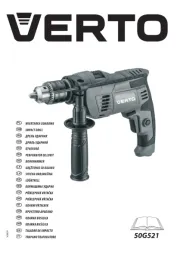
30 Juli 2025
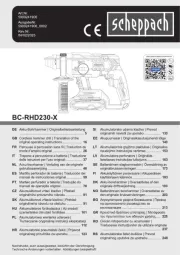
29 Juli 2025
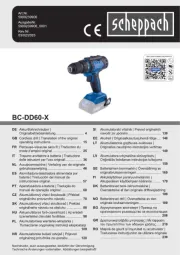
29 Juli 2025
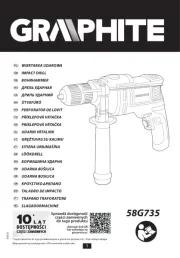
29 Juli 2025
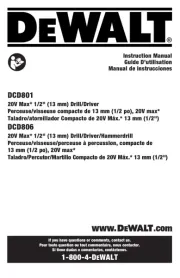
29 Juli 2025
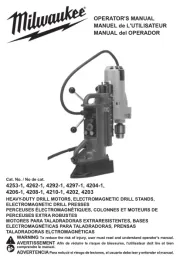
22 Juli 2025
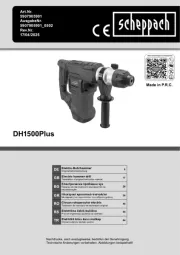
21 Juli 2025
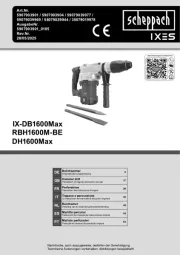
21 Juli 2025
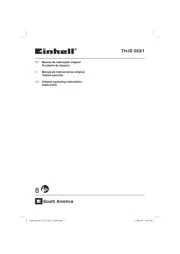
21 Juli 2025
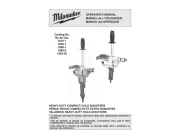
16 Juli 2025